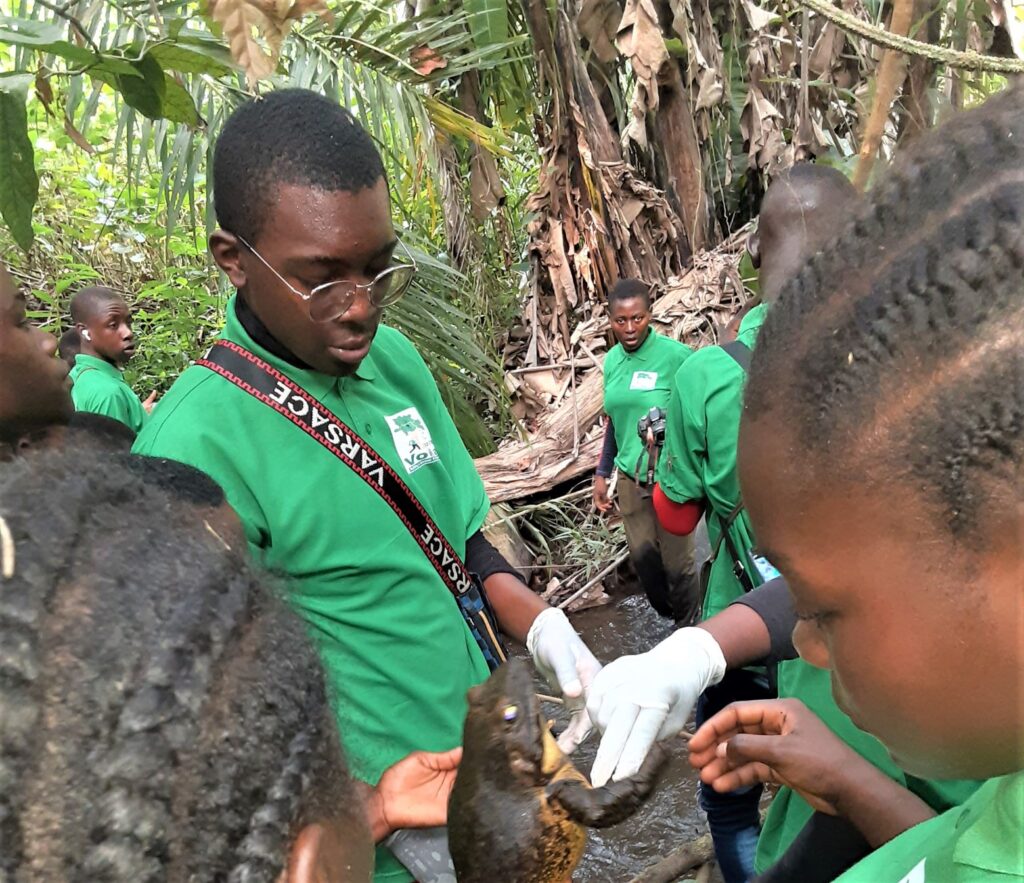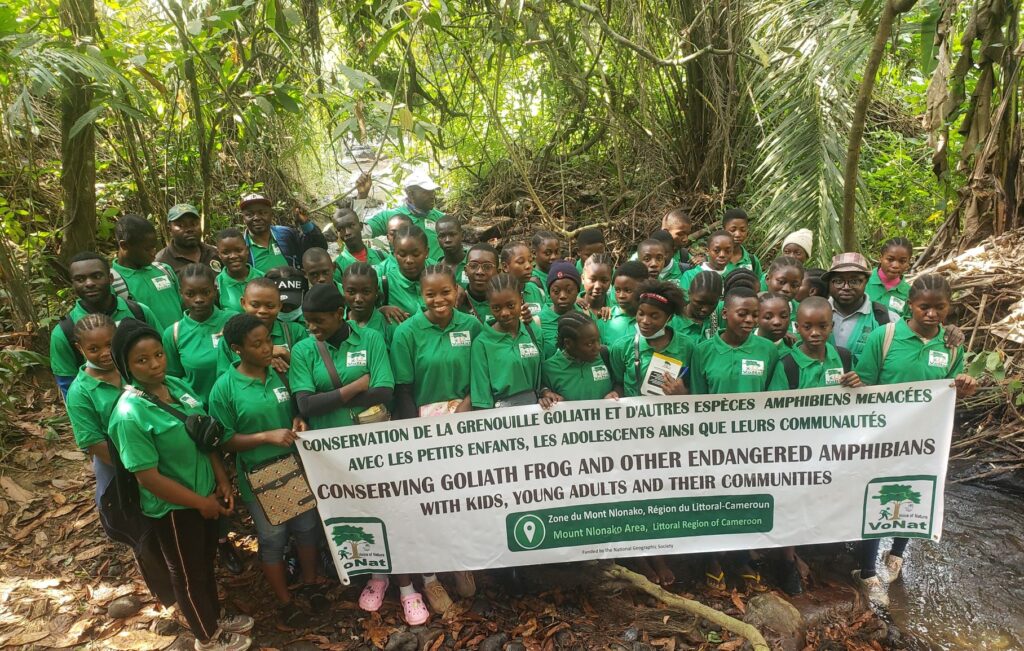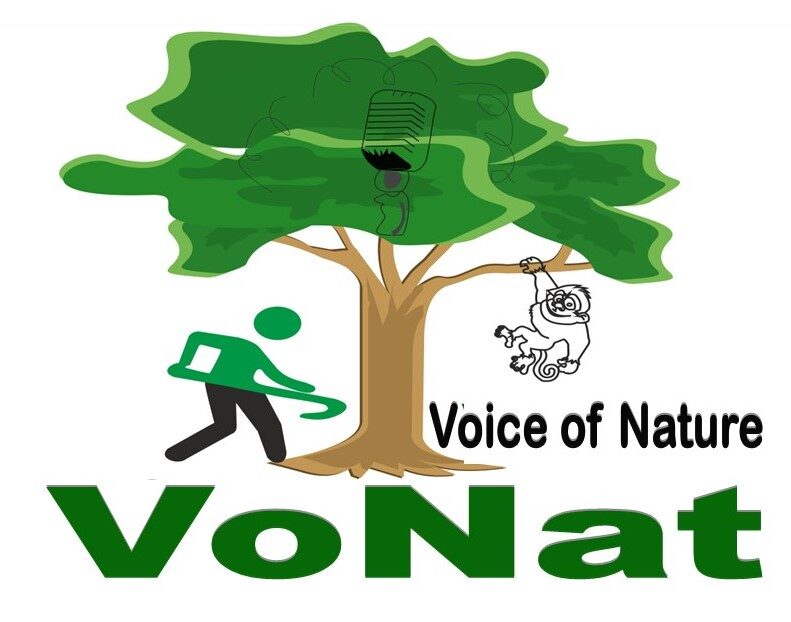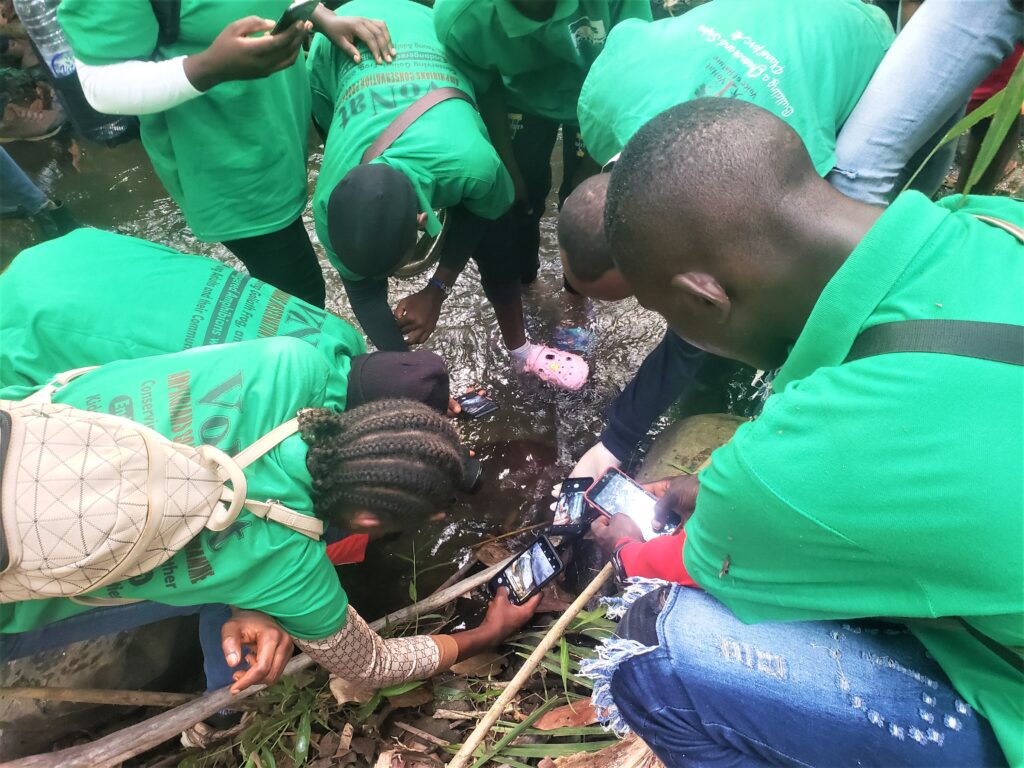2022 National Geographic Explorer, Ndiumh B. Shancho, the executive Director of Voice of Nature (VoNat) and his team have engaged over 70 kids from 5 communities; Nkongnine, Ebone, Ntolo, Nkola and Mangengole communities of the Mount Nlonako area of Cameroon in ecological study of the world’s largest frog, goliath frog (Conraua goliath) and other biodiversity species.

The ecological study trip took place on January 21, 2023, both during the day and in the night at River Ndibe and River Dibombe, Mungo Division, Littoral Region of Cameroon. This trip was aimed at boosting the understanding of the kids and young adults on the ecology of the goliath frog and other amphibians species as a means of igniting in the youngsters fresh zeal for conservation.
The young amphibians conservation ambassadors moved along the bank and through the rivers recording vital data about the goliath frog and other biodiversity species using mobile apps. This included but not limited to direct observation of species in their habitats (dead and alive), feeding signs, dungs, threats, vocalization and others. “I saw the feces of the goliath frog, something I have never seen before. I also saw a snake, though it was not alive,” Ebude Christabel from Ntolo community said while carrying on with the exercise.

Marie Therese from Nkongnine and her friends were particularly thrilled seeing the goliath frog in its natural habitat for the first time. “This is my first time seeing the Goliath frog and other species in their natural habitat. I am so happy because not everyone is given this kind of opportunity,” Marie Therese said. The youngsters pledged to sensitize their friends and family members of the importance of conserving the goliath frog and other endangered amphibians in the area.

The kids were guided to identify the different species recorded during the ecological study trip using iNaturalist. According to the Mr. Ndimuh Bertrand Shancho, 25 observations were made with up to 17 species identified including amphibians species, fish, reptiles and insects. The ecological study was carried out as part of Ndimuh B. Sancho’s project, to save the world’s largest frog in the Mount Nlonako Area from extinction with community kids and young adults funded by the National Geographic Society.

